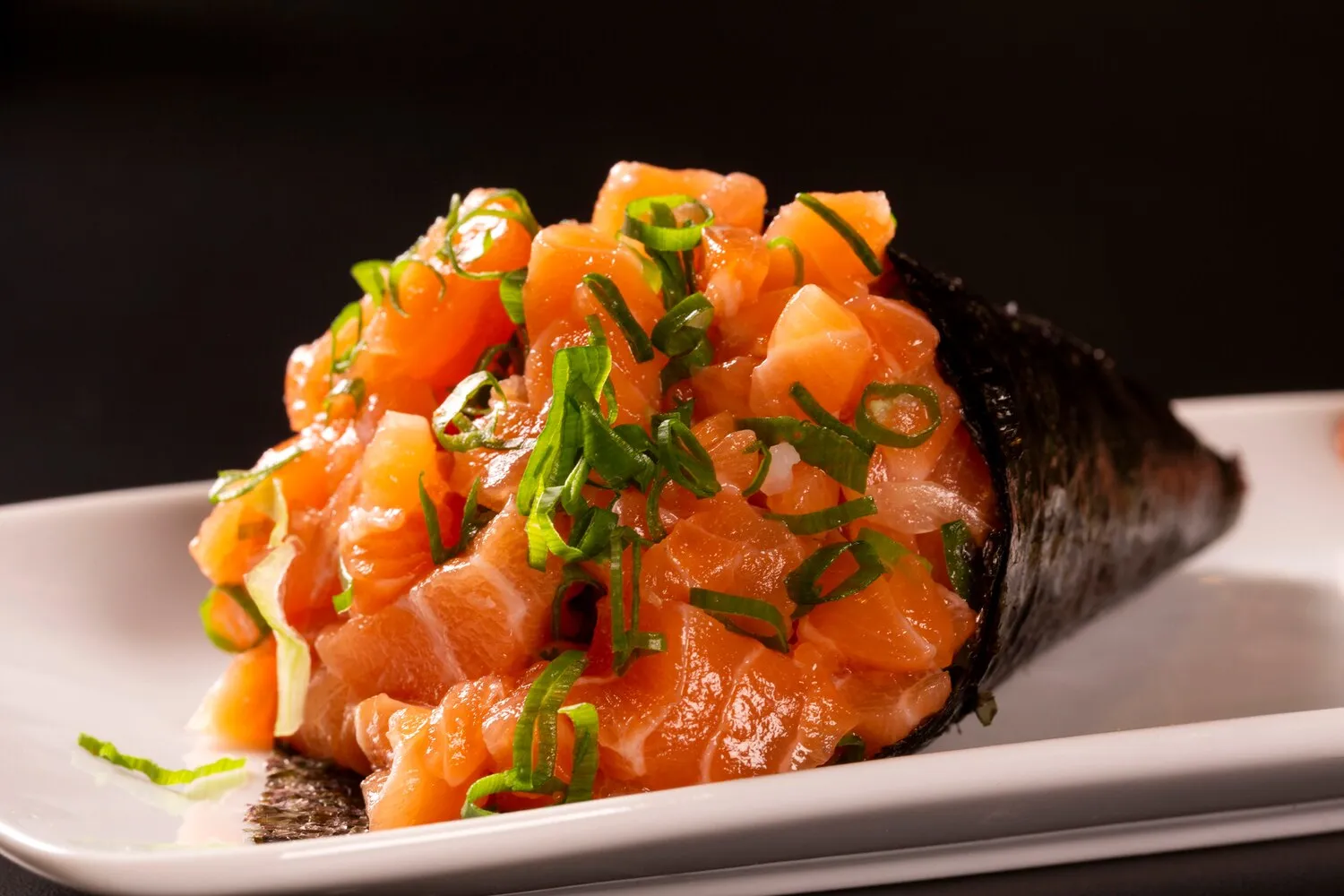
Temaki
Cone-shaped seaweed wrap filled with rice, fish, and other ingredients.
Nutrition Facts
* The % Daily Value (DV) tells you how much a nutrient in a serving of food contributes to a daily diet. 2,000 calories a day is used for general nutrition advice.
Temaki, meaning 'hand roll', is a relatively modern form of sushi that emerged in Japan. Unlike more formal sushi types like nigiri or maki, temaki was developed as a casual, quick, and customizable way to enjoy sushi, often eaten at home or in informal settings. Its popularity grew alongside the broader appreciation of sushi beyond high-end restaurants.
Temaki is deeply ingrained in Japanese food culture as a fun, interactive, and social dining experience. It is commonly enjoyed at home parties, casual gatherings, and even some restaurants, encouraging participation and customization.
DIY Dining
Temaki is often assembled by each individual at the table, allowing everyone to create their own personalized rolls based on their preferences. This fosters a sense of community and shared enjoyment.
Informal Setting
Unlike more formal sushi presentations, temaki is typically enjoyed in relaxed environments. It's seen as a casual and approachable way to savor sushi without the strict etiquette associated with formal sushi dining.
Party Food
Temaki parties are a popular way to entertain in Japan. Hosts provide the ingredients, and guests assemble their own temaki, leading to a lively and interactive dining experience.
Temaki offers a symphony of flavors, combining the savory umami of seaweed, the subtle sweetness and tang of sushi rice, and the fresh, vibrant tastes of various fillings. The flavor profile is highly customizable based on the ingredients chosen.
The primary flavors revolve around the nori seaweed, which provides a slightly salty and oceanic taste and a crispy texture. Sushi rice contributes a subtle sweetness and vinegar tang. Common fillings include raw fish like tuna, salmon, yellowtail (offering buttery, rich, or subtly metallic flavors, respectively), cooked seafood like shrimp or crab (providing sweetness and a delicate texture), vegetables like cucumber, avocado, or sprouts (adding freshness and textural contrast), and condiments like wasabi, ginger, or spicy mayonnaise (providing heat, cleansing acidity, or creamy richness). The combination of these elements creates a dynamic and satisfying culinary experience.
Fresh Ingredients are Key
The quality of ingredients is crucial for temaki. Use the freshest fish, crisp vegetables, and perfectly seasoned sushi rice for the best flavor.
Prepare in Advance
Prepare all ingredients before assembling the temaki. Slice fish and vegetables, cook the rice, and have condiments readily available. This ensures a smooth and efficient assembly process.
Don't Overfill
Avoid overfilling the temaki to prevent it from falling apart. A moderate amount of ingredients will create a well-balanced and easy-to-eat roll.
Eat Immediately
Temaki is best enjoyed immediately after assembly. The seaweed can become soggy if left to sit for too long. This ensures the crispy texture and optimal flavor.
Explore additional Japanese dishes and restaurants
Explore JapaneseDiscover top dining spots and culinary experiences in Chapecó.
Explore ChapecóLearn more about the food culture, restaurant scene, and culinary heritage of Brazil.
Explore Brazil